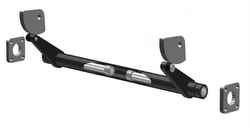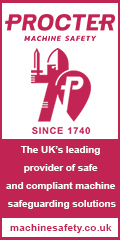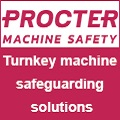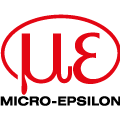
Posted to News on 17th May 2016, 14:54
A balancing act: the benefits of using counterbalance technology
Stewart Beck of Southco discusses the performance advantages of counterbalance technology when compared with alternative technologies available on the market.

Since making their first entry into the market of positioning technology more than 20 years ago, counterbalance mechanisms have firmly established themselves as proven and reliable systems for applications which involve repeated heavy lifting. They reduce the weight of the lid and give the end user precise control of the door through the full range of motion. Counterbalances offer superior performance over extended periods of time while other technologies, such as gas springs, tend to decline over time, requiring maintenance and eventual replacement. This, along with a number of additional benefits, helps to build a compelling case for the specification of counterbalance technology over alternative hinge and positioning products.
A counterbalance is a mechanical torsion spring system designed to take the effort out of lifting and supporting lids, covers, countertops and electro-mechanical equipment. The technology itself is relatively straightforward: a torsion bar is moved a few degrees to move a heavier object by a greater distance with the help of a follower arm and cam design. This system can make a hinge, for example, self-open, detent in any position or snap shut as required, depending on the application and function. Given the breadth and scope of counterbalance systems, there is potential for their inclusion across a variety of industries and applications, including covers for industrial machinery, medical and diagnostic equipment, fold-up or fold-down work surfaces and armoured vehicle hatches, to name but a few.
Where there is a requirement for lightweight torques, other technologies, such as friction and positioning hinges, tend to be more suitable. Hinges are more suited to smaller panels. However, where the level of force required exceeds a certain threshold, counterbalance technology offers a valid alternative, and yet, is often overlooked in favour of gas struts which harness compressed nitrogen gas to exert the necessary force for heavy lifting. Gas struts can reduce the amount of force required to open, close and manipulate lids and other components but are limited in terms of their ability to totally total control of motion and to be affected by changes in temperature. Counterbalances, however, offer greater flexibility and are not impacted by temperature fluctuations.
Optimising performance
Each of the applications previously mentioned carries its own set of challenges. A number of factors must therefore be taken into account when specifying a product based on counterbalance technology. Proper consideration of these can help ensure the demands of the application are fully met, optimising performance over time. For instance, in medical or food applications where hygiene is paramount, the design must allow for easy access for cleaning. Counterbalances are compact, with a torsion bar feature enclosed within the design, making them easy to clean and, therefore, more suited to applications in the food and medical sectors.
Common to virtually all counterbalance components is the requirement for minimal maintenance. This is where the technology comes into its own: repairing or replacing faulty systems can prove costly in terms of components, labour and equipment downtime. Finding a robust and reliable positioning technology product, therefore, is key. Where product life cycle is concerned, the difference between gas springs and counterbalance technology is quite staggering. While the former has a varying cycle life dependent on the life of components, this is invariably much lower than the high life cycle of counterbalance systems, which require almost no maintenance: seals used in gas springs degrade over time, often resulting in the need to replace the entire gas strut to maintain the required operating pressure. Counterbalance technology, on the other hand, requires virtually no manual intervention and represents the far superior option in terms of performance, reliability and ergonomics.
Drawing on its experience in engineered flexible position control technology and following its recent acquisition of Counterbalance Corporation, Southco's capability in the field of counterbalance technology is world class. With a demonstrable track record for producing bespoke designs to meet even the most demanding of specifications, Southco now offers an extensive range of counterbalance technology. This can be incorporated into applications spanning a range of sectors and offers manufacturers a real edge over many alternatives presently available on the market. For further information about Southco's counterbalance technology, please visit www.cbal.com or email [email protected].
Want the latest machine building news straight to your inbox? Become a MachineBuilding member for free today >>

















